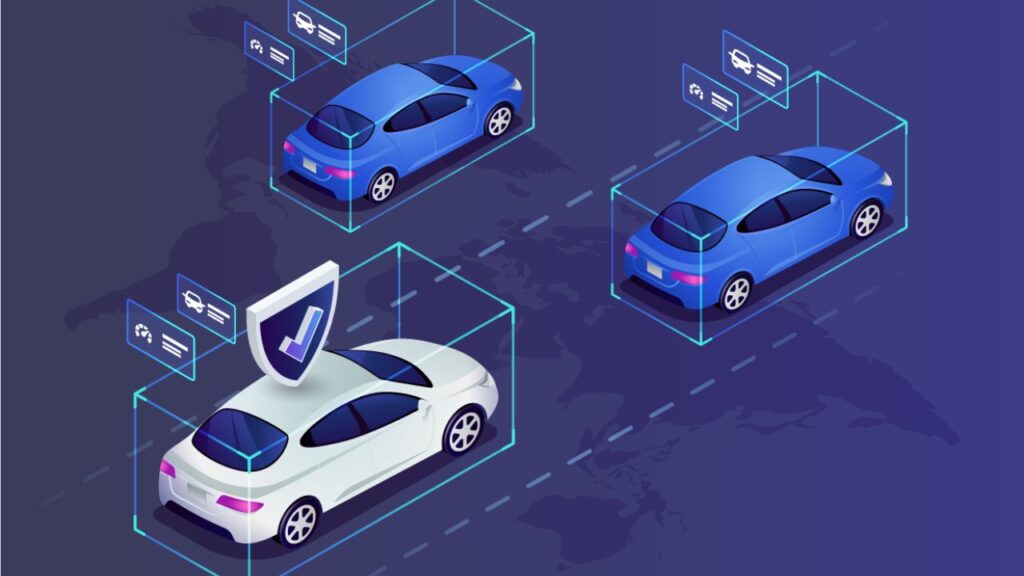Comprehensive Guide to Usage Based Insurance: Revolutionizing Auto Insurance

Enter the era of Usage Based Insurance (UBI), a dynamic approach that tailors insurance rates to individual driving behaviors. In the realm of auto insurance, a groundbreaking evolution has taken shape, reshaping the landscape for drivers worldwide. Gone are the days of generic premiums based solely on demographics and historical data.
Imagine a world where your insurance premium isn’t a fixed number dictated by statistical averages, but rather a personalized reflection of your driving habits. This is the promise of UBI—a revolutionary concept that utilizes cutting-edge technology to assess how, when, and where you drive, providing a fairer and more transparent insurance pricing model.
In this comprehensive guide, we’ll delve into the intricacies of Usage-Based Insurance, exploring how it works, its benefits, potential drawbacks, and its transformative impact on the insurance industry and drivers alike.
Whether you’re a seasoned driver seeking to optimize your insurance costs or simply intrigued by the latest advancements in automotive technology, this article is your gateway to understanding the future of auto insurance. So buckle up as we embark on a journey through the exciting world of Usage-Based Insurance.

Understanding Usage Based Insurance (UBI)
Usage-Based Insurance (UBI) is a revolutionary concept in the auto insurance industry, reshaping the way premiums are determined by focusing on individual driving behaviors rather than relying solely on traditional factors like age, gender, or location. At its core, UBI leverages telematics technology, which involves the use of devices installed in vehicles to gather data on various aspects of driving performance.
Telematics devices, often small and inconspicuous, are capable of collecting a wealth of information in real-time. These devices track metrics such as speed, mileage, acceleration, braking patterns, and even the time of day when the vehicle is in use. By continuously monitoring these factors, UBI provides insurers with a comprehensive understanding of how a driver behaves behind the wheel.
The data collected by telematics devices is then transmitted to insurance companies, where it undergoes detailed analysis. Sophisticated algorithms are employed to assess the level of risk associated with each driver based on their driving habits. Factors such as speeding, aggressive acceleration or braking, and late-night driving are taken into account when determining a driver’s risk profile.
Unlike traditional insurance models that rely on generalized assumptions, UBI offers personalized premiums that reflect the individual risk posed by each driver. Those who demonstrate safe driving behaviors may be eligible for discounts or other incentives from their insurance providers, while those with riskier driving habits may see their premiums adjusted accordingly.
Moreover, UBI promotes transparency and empowers drivers by providing them with insights into their insurance costs and driving performance. Many UBI programs offer drivers access to their driving data through mobile apps or online portals, allowing them to track their progress, receive feedback on their driving behavior, and understand how it impacts their premiums.
This level of transparency enables drivers to make informed decisions about their driving habits and take proactive steps to improve their safety on the road.
Overall, Understanding Usage Based Insurance (UBI) involves recognizing its innovative approach to auto insurance, where premiums are personalized based on individual driving behaviors. By leveraging telematics technology and data analytics, UBI not only offers fairer pricing but also incentivizes safe driving, promotes transparency, and drives positive change in the insurance industry.
How Does Usage Based Car Insurance Work?
Usage-Based Car Insurance operates by integrating telematics technology into vehicles to collect data about the driver’s behavior. Telematics devices, also known as “black boxes” or “dongles,” are typically small, GPS-enabled devices that are installed in a vehicle’s onboard diagnostics (OBD-II) port or attached to the vehicle’s dashboard.
These devices continuously monitor and record various metrics related to the vehicle’s operation and the driver’s behavior while behind the wheel.
Once installed, telematics devices begin collecting a wide range of data points during every trip the vehicle makes. These data points include:
- Speed: Telematics devices track the vehicle’s speed in real-time, recording both the maximum and average speeds reached during a trip. This data helps insurers assess how often a driver exceeds the speed limit or engages in high-speed driving, which can increase the risk of accidents.
- Mileage: The total distance traveled by the vehicle is recorded, providing insurers with insight into how frequently and how far the driver typically drives. This information is crucial for determining the likelihood of accidents and the overall risk associated with insuring the vehicle.
- Acceleration and Braking: Telematics devices measure how aggressively the driver accelerates and brakes while driving. Sudden acceleration and hard braking events can indicate erratic or aggressive driving behavior, which may increase the risk of accidents and lead to higher insurance premiums.
- Time of Day: Some UBI programs take into account the time of day when the vehicle is in use. Driving during high-risk times, such as late at night or during rush hour traffic, may be considered more hazardous and could impact the driver’s insurance rates.
- Location: GPS technology allows telematics devices to track the vehicle’s location throughout each trip. This information can be used to determine the types of roads and environments the driver frequently encounters, which may affect their risk profile.
Once the data is collected by the telematics device, it is transmitted to the insurance company’s servers for analysis. Insurers use sophisticated algorithms to evaluate the driver’s behavior and assess their level of risk. Based on this analysis, the driver’s insurance premiums are calculated, with safer drivers typically receiving lower rates and those deemed higher risk facing higher premiums.
In addition to determining premiums, Usage-Based Car Insurance programs often provide drivers with access to their driving data through mobile apps or online portals.
This allows drivers to review their driving performance, track their progress over time, and receive feedback on ways to improve their driving habits. Some programs even offer rewards or incentives for safe driving behavior, further encouraging drivers to adopt safer practices behind the wheel.
Overall, Usage-Based Car Insurance operates by leveraging telematics technology to collect and analyze data about a driver’s behavior, ultimately leading to personalized insurance premiums based on individual driving habits. By promoting safer driving behaviors and offering transparency and feedback, UBI programs aim to improve road safety and reduce the risk of accidents for all drivers.

What to Find Out Before You Sign Up for Usage-Based Insurance?
Before signing up for Usage-Based Insurance (UBI), there are several important factors to consider to ensure that the program meets your needs and aligns with your preferences. Here are some key aspects to find out before enrolling:
- Coverage Details: Understand the extent of coverage offered by the UBI policy. Ensure that it meets your requirements and provides adequate protection for your vehicle and personal liability.
- Data Collection Methods: Inquire about the specific data points that will be collected by the telematics device. Understand how the device tracks your driving behavior and what information will be transmitted to the insurance company.
- Privacy and Security Measures: Ask about the privacy and security measures implemented by the insurance provider to protect your personal data. Ensure that your information will be kept confidential and used only for insurance-related purposes.
- Premium Calculation Process: Gain insight into how your premiums will be calculated based on your driving behavior. Understand the factors that influence your rates and how changes in your driving habits may impact your premiums over time.
- Discounts and Incentives: Inquire about any discounts or incentives offered for safe driving behavior. Find out how you can qualify for these rewards and what steps you can take to maximize your savings through the UBI program.
- Program Requirements and Restrictions: Understand any requirements or restrictions associated with participating in the UBI program. This may include limitations on the types of vehicles eligible for coverage or geographic restrictions on where the program is available.
- Customer Support and Assistance: Evaluate the level of customer support provided by the insurance company. Ensure that you have access to assistance and guidance throughout the duration of your participation in the UBI program.
- Opt-Out Options: Clarify the process for opting out of the UBI program if you decide it’s not the right fit for you. Understand any penalties or fees associated with discontinuing participation before the end of the policy term.
- Reviews and Feedback: Research reviews and feedback from current or past participants in the UBI program. Gain insights into their experiences and satisfaction levels to help inform your decision.
- Comparison with Traditional Insurance: Compare the costs and benefits of UBI with traditional insurance options. Consider how UBI aligns with your budget and driving habits compared to standard insurance policies.
By thoroughly researching and understanding these aspects of Usage-Based Insurance (UBI) before signing up, you can make an informed decision that best suits your needs and preferences while potentially maximizing your savings and benefits through the program.

The Benefits of UBI
- Personalized Premiums: UBI offers personalized insurance premiums based on individual driving behaviors. This means that safe drivers who exhibit responsible behavior behind the wheel are rewarded with lower premiums, while riskier drivers may face higher rates. This personalized pricing model ensures that drivers are only paying for the coverage they need, based on their actual driving habits.
- Incentives for Safe Driving: UBI programs often include incentives and rewards for safe driving behavior. Drivers who consistently demonstrate safe practices, such as obeying speed limits, avoiding sudden stops, and minimizing distractions, may qualify for discounts, cash rewards, or other benefits. These incentives not only help to reduce insurance costs but also encourage drivers to adopt safer behaviors on the road, leading to fewer accidents and improved road safety for all.
- Transparency and Control: UBI provides drivers with greater transparency and control over their insurance costs. Through real-time feedback and access to driving data via mobile apps or online portals, drivers can monitor their driving performance, track their progress, and understand how their behavior behind the wheel impacts their premiums. This transparency empowers drivers to make informed decisions about their driving habits and take proactive steps to improve their safety on the road.
- Accurate Risk Assessment: Traditional insurance models often rely on demographic factors and historical data to assess risk and calculate premiums. However, UBI utilizes telematics technology to gather real-time data about a driver’s behavior, providing insurers with a more accurate and up-to-date assessment of risk. By evaluating factors such as speed, mileage, acceleration, and braking patterns, UBI enables insurers to better understand each driver’s risk profile and offer more precise pricing accordingly.
- Potential Cost Savings: For many drivers, UBI can lead to significant cost savings on insurance premiums. By adopting safer driving habits and qualifying for discounts and incentives, drivers may be able to lower their insurance costs compared to traditional fixed-rate policies. Additionally, UBI programs often offer the opportunity for drivers to earn additional savings over time as they continue to demonstrate safe driving behavior.
Various Types of Usage-Based Car Insurance
- Pay-As-You-Drive (PAYD): PAYD insurance bases premiums primarily on the number of miles driven. Drivers pay a lower base rate and are charged per mile driven, making it an ideal option for those who drive infrequently or have shorter daily commutes.
- Pay-How-You-Drive (PHYD): PHYD insurance assesses premiums based on specific driving behaviors, such as speed, acceleration, braking, and time of day. Drivers are rewarded for safe driving practices with lower premiums, while risky behaviors may result in higher rates.
- Pay-Per-Mile (PPM): PPM insurance charges drivers based on the number of miles driven, similar to PAYD. However, PPM may not take into account specific driving behaviors and instead focuses solely on mileage as the primary factor influencing premiums.
- Behavior-Based Insurance (BBI): BBI combines elements of both PAYD and PHYD, assessing premiums based on both the number of miles driven and specific driving behaviors. This comprehensive approach offers drivers personalized pricing based on their individual driving habits and patterns.
- Usage-Based Telematics Programs: Some insurance companies offer usage-based telematics programs that incorporate advanced technology, such as GPS tracking and real-time data analysis, to assess driving behavior and calculate premiums. These programs may offer additional features and benefits, such as driver coaching, vehicle diagnostics, and theft recovery services.
By understanding the benefits of UBI and the various types of usage-based car insurance available, drivers can make informed decisions about their insurance coverage and select the option that best suits their needs and preferences. Whether it’s lowering premiums, promoting safer driving habits, or gaining greater control over insurance costs, UBI offers numerous advantages for drivers looking to optimize their coverage and save money on auto insurance.

Challenges and Considerations
Usage Based Insurance (UBI) presents several challenges and considerations that both insurers and policyholders need to be aware of:
- Privacy Concerns: UBI involves the collection of sensitive driving data, raising privacy concerns among some drivers. Insurers must ensure that they handle and protect this data in compliance with privacy regulations and provide transparency regarding how the data is used.
- Technical Limitations: UBI relies on telematics technology, which may have technical limitations or compatibility issues with certain vehicles or devices. Insurers need to ensure that their telematics systems are reliable and accessible to all drivers.
- Data Accuracy and Interpretation: The accuracy of the data collected by telematics devices can vary, leading to potential discrepancies in premium calculations. Insurers must carefully interpret and analyze this data to accurately assess risk and determine premiums.
- Customer Acceptance: Some drivers may be hesitant to adopt UBI due to concerns about privacy, data security, or skepticism about the fairness of the pricing model. Insurers must effectively communicate the benefits of UBI and address any concerns to encourage widespread adoption.
- Regulatory Compliance: UBI programs are subject to regulatory requirements and guidelines governing data privacy, consumer protection, and insurance practices. Insurers must ensure compliance with these regulations to avoid legal issues or penalties.
The Impact of UBI on the Insurance Industry
UBI has a significant impact on the insurance industry, driving innovation, and reshaping traditional business models:
- Disruption and Innovation: UBI represents a disruptive force in the insurance industry, challenging traditional pricing models and encouraging insurers to innovate. Insurers are investing in telematics technology and data analytics to offer UBI programs and stay competitive in the market.
- Market Trends and Adoption Rates: UBI is experiencing rapid growth and increasing adoption rates among insurers and policyholders. As more drivers recognize the benefits of personalized pricing and incentives for safe driving, UBI is expected to become increasingly prevalent in the insurance market.
- Regulatory Landscape: UBI programs are subject to regulatory oversight, with regulators monitoring issues such as data privacy, consumer protection, and fairness in pricing. Insurers must navigate the regulatory landscape and comply with applicable laws and regulations to operate UBI programs legally and ethically.
How Do I Report My Driving with UBI?
Reporting your driving behavior with UBI typically involves the following steps:
- Installation of Telematics Device: If you’re participating in a UBI program, you’ll need to install a telematics device in your vehicle. This device collects data about your driving behavior, such as speed, mileage, acceleration, braking, and time of day.
- Data Transmission: The telematics device transmits the collected data to the insurance company’s servers for analysis. This may occur automatically over a wireless network or through periodic data uploads initiated by the driver.
- Accessing Driving Data: Many UBI programs provide drivers with access to their driving data through mobile apps or online portals. You can log in to these platforms to view information about your driving performance, track your progress, and receive feedback on ways to improve your driving habits.
- Reviewing Feedback and Incentives: Take advantage of the feedback and incentives offered by your UBI program to improve your driving behavior and potentially earn rewards or discounts on your insurance premiums. Use the insights gained from your driving data to make informed decisions about your driving habits and safety on the road.

Navigating the UBI Landscape
Navigating the UBI landscape involves understanding the various aspects of usage-based insurance and selecting the right program for your needs:
- Researching Options: Explore the different UBI programs offered by insurance companies to find one that aligns with your driving habits, preferences, and budget. Consider factors such as coverage options, premium pricing, incentives for safe driving, and user experience.
- Evaluating Requirements: Understand the requirements and obligations associated with participating in a UBI program, such as installing a telematics device in your vehicle, sharing driving data with the insurer, and complying with program rules and guidelines.
- Reviewing Terms and Conditions: Read the terms and conditions of the UBI program carefully to understand how your driving data will be used, what incentives or rewards are available, and any limitations or exclusions that may apply.
- Seeking Assistance: If you have questions or concerns about a UBI program, don’t hesitate to reach out to the insurance company or program provider for assistance. They can provide information, guidance, and support to help you navigate the UBI landscape and make informed decisions about your insurance coverage.
Is Usage-Based Insurance Worth It?
Determining whether UBI is worth it depends on various factors, including your driving habits, preferences, and financial considerations:
- Cost Savings: UBI has the potential to lower insurance premiums for drivers who demonstrate safe driving behavior and qualify for discounts or incentives. If you’re able to reduce your insurance costs through UBI, it may be worth participating in a program.
- Promotion of Safe Driving: UBI encourages safe driving habits by providing feedback, rewards, and incentives for responsible behavior behind the wheel. If you’re committed to improving your driving habits and prioritizing road safety, UBI can be a valuable tool for achieving these goals.
- Transparency and Control: UBI offers greater transparency and control over insurance costs by providing insights into your driving performance and how it impacts your premiums. If you value transparency and want more control over your insurance expenses, UBI may be worth considering.
- Privacy and Security Concerns: If you have concerns about privacy, data security, or the collection of sensitive driving data, you may be hesitant to participate in a UBI program. It’s important to weigh the potential benefits of UBI against any privacy or security risks and determine whether the trade-offs are acceptable to you.
Ultimately, whether Usage-Based Insurance is worth it depends on your individual circumstances and priorities. It’s essential to carefully evaluate the pros and cons of UBI and consider how it aligns with your driving habits, preferences, and financial goals before deciding whether to enroll in a UBI program.
Conclusion: Embracing the Future of Auto Insurance
In conclusion, Usage-Based Insurance (UBI) represents a significant evolution in the auto insurance industry, offering personalized premiums based on individual driving behaviors. Despite its numerous benefits, including cost savings, incentives for safe driving, and greater transparency, UBI also presents challenges and considerations that both insurers and policyholders must address.
Privacy concerns, technical limitations, and regulatory compliance are among the key challenges associated with UBI, requiring careful attention and proactive measures to mitigate risks and ensure compliance with applicable laws and regulations. Additionally, drivers must navigate the UBI landscape by researching options, understanding program requirements, and evaluating the potential benefits and trade-offs before enrolling in a UBI program.
Ultimately, whether UBI is worth it depends on individual circumstances, preferences, and priorities. For drivers who prioritize cost savings, promotion of safe driving habits, and transparency and control over insurance costs, UBI may offer significant advantages. However, it’s essential to carefully weigh the pros and cons of UBI and consider how it aligns with your driving habits, preferences, and financial goals before making a decision.
As UBI continues to gain traction and evolve, both insurers and policyholders will play a crucial role in shaping its future direction and ensuring its effectiveness and sustainability. By addressing challenges, promoting innovation, and fostering collaboration, UBI has the potential to drive positive change in the insurance industry and improve road safety for all drivers.






